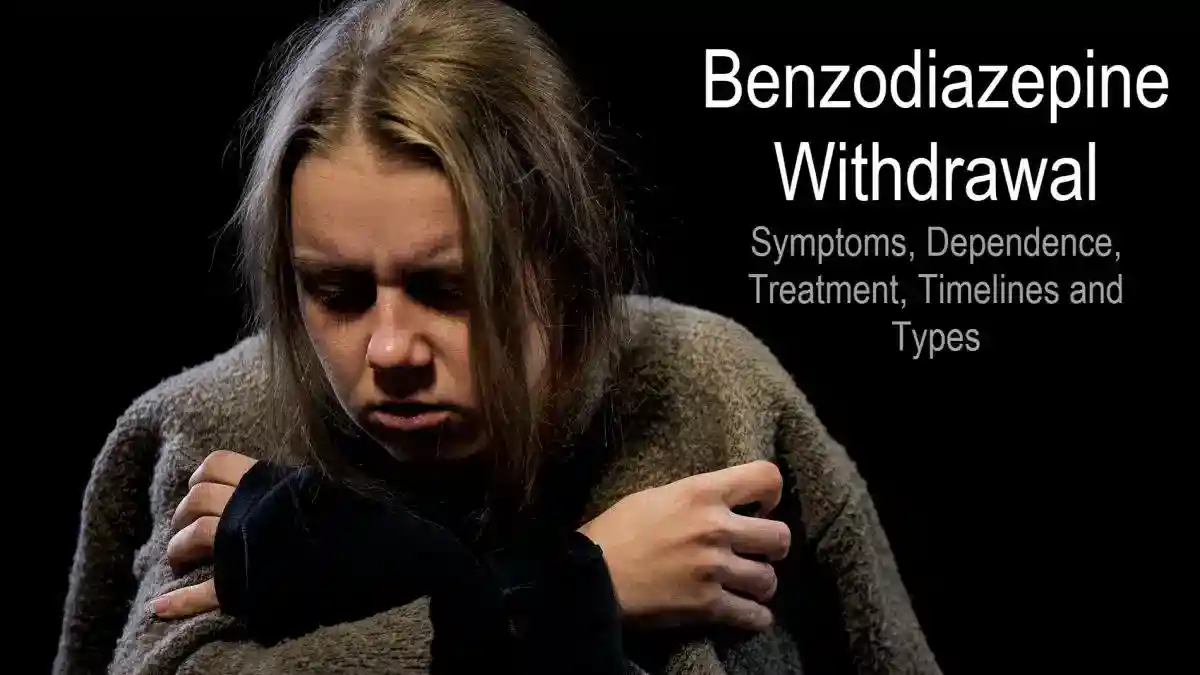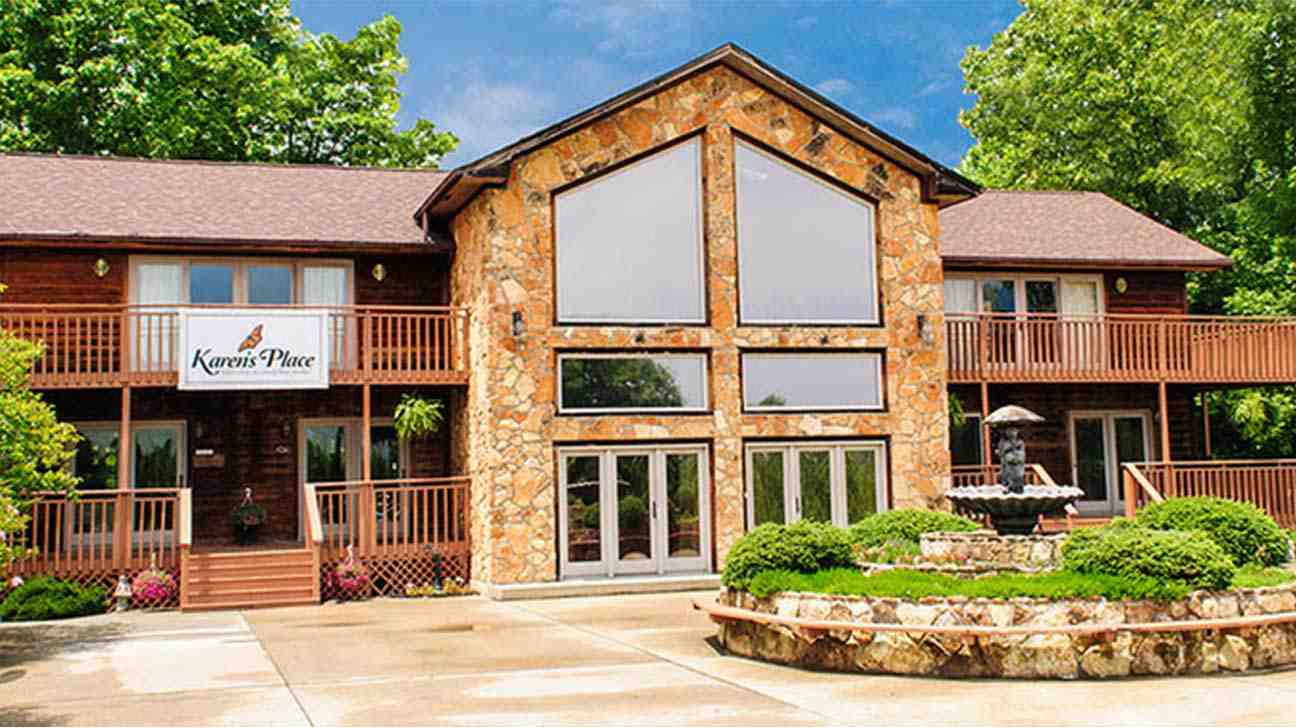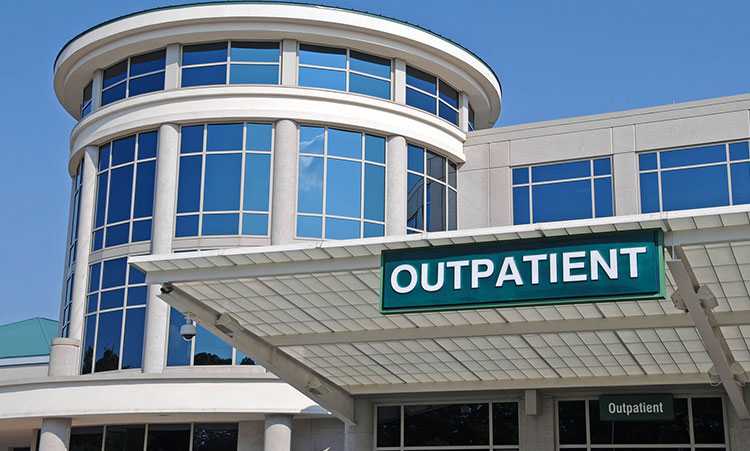
Outpatient addiction treatment offers a path to recovery that fits into your life, allowing you to live at home while getting professional help. It’s structured like a series of specialized therapy appointments—you receive expert guidance and then go back to your daily routine, putting new skills to work right away. This approach weaves recovery directly into your existing work, school, and family commitments.
Understanding Flexible Addiction Treatment
When most people picture addiction treatment, they imagine moving into a facility for an extended stay. That model, known as inpatient or residential rehab, is a critical option for many, but outpatient addiction treatment programs provide a powerful and effective alternative. They are built for people who need consistent, professional support but already have a stable and safe home environment.
This structure breaks down the wall between the therapy room and the real world. Instead of learning coping strategies in a protected setting, you’re immediately faced with opportunities to use them in your day-to-day life. This constant, real-time practice is what helps cement new, healthy habits and builds genuine confidence in handling triggers as they arise. The whole philosophy is about building a foundation for recovery right where you live, not in a place removed from it.
Let’s take a quick look at the core components of outpatient treatment.
Outpatient Treatment At a Glance
The table below offers a simple summary of the fundamental characteristics of outpatient addiction treatment programs.
| Characteristic | Description |
|---|---|
| Living Arrangement | Clients live at home and travel to a facility for scheduled treatment sessions. |
| Time Commitment | Varies from a few hours to several hours per week, depending on the program’s intensity. |
| Structure | Combines individual therapy, group counseling, and educational workshops. |
| Ideal Candidate | Someone with a stable home, strong motivation, and no need for 24/7 medical supervision. |
| Flexibility | Allows clients to maintain work, school, and family responsibilities. |
This model provides a practical framework for recovery that integrates seamlessly with daily life.
Call Now – Your Journey to Recovery Begins Today!

Take the first step towards a healthier life! Call now to connect with our compassionate team and start your recovery journey today. Your path to healing awaits!
Our recovery specialists are available 24/7 to provide support, and all calls are confidential and free. Reach out anytime – we’re here to help!
The Contrast with Inpatient Care
The biggest difference boils down to where you sleep at night and how immersed you are in the program. Inpatient rehab provides a fully structured, 24/7 environment. It temporarily removes you from your daily life so you can focus entirely on getting well, which is often crucial for those with severe substance use disorders, co-occurring mental health conditions, or an unstable home life.
Outpatient care, on the other hand, is built on a different set of principles.
- Maintained Responsibilities: You can keep going to work, attending classes, and taking care of your family.
- Real-World Practice: The skills you learn in a session can be put to the test that same day.
- Community Integration: Your recovery is built within the context of your existing support system and community.
- Greater Affordability: Because these programs don’t include the costs of room, board, and round-the-clock staffing, they are typically less expensive.
“By allowing people to stay connected to their jobs, families, and communities, outpatient programs help dissolve the stigma that can come with seeking treatment. It makes recovery feel like a part of your life, not a separate event you have to go away for.”
Who Benefits from an Outpatient Model
This flexible approach is a great fit for people who have a solid support system at home and don’t need a medically supervised detox. To get a better sense of the different levels of care, learning more about what to expect in rehab can offer some helpful perspective. An outpatient program works best when someone is truly motivated to recover and can handle their daily responsibilities while still committing to their scheduled treatment.
Ultimately, these programs open the door to quality care without forcing you to press pause on your entire life, paving a practical and sustainable road to lasting recovery.
Navigating the Levels of Outpatient Care
When it comes to outpatient addiction treatment, there’s no such thing as a one-size-fits-all program. Instead, care is offered across a spectrum, with different levels of intensity designed to meet you exactly where you are in your recovery. Figuring out these tiers is the key to finding the right fit for your needs, your schedule, and your personal recovery goals.
Think of it like different training plans at a gym. Someone just starting out might need a personal trainer several days a week for intensive guidance—that’s like a PHP. Another person might do great with a few group fitness classes each week to stay motivated, which is similar to an IOP. And someone else might just need a monthly check-in with a coach to stay on track, like a standard OP. The goal is always the same—getting stronger—but the approach is built around you.
This tiered system ensures that whether you’re transitioning from an inpatient facility or taking your first step toward recovery, there’s a program structured to give you the right amount of support without completely upending your life.
Standard Outpatient Programs (OP)
The most flexible option on the spectrum is the Standard Outpatient Program, or OP. This is the least intensive form of outpatient care, typically requiring only a few hours of therapy each week. Because of its low time commitment, this structure is a great match for people who already have a solid foundation in their recovery and a stable, supportive home life.
Most people in an OP attend one or two sessions a week. These often include:
- Individual Counseling: Private, one-on-one sessions with a therapist to work through personal triggers, roadblocks, and celebrate progress.
- Group Therapy: Small, confidential group meetings with peers, which are fantastic for sharing experiences, building a real sense of community, and learning from others.
- Family Therapy: Sessions that bring in loved ones to help mend relationships and create a stronger, more informed support network at home.
Because it’s so flexible, an OP is an excellent step-down for someone who has finished a more intensive program and is ready to put their new skills to the test with greater independence.
Intensive Outpatient Programs (IOP)
What if you need more structure than a standard OP but don’t need 24/7 supervision? An Intensive Outpatient Program (IOP) hits that sweet spot. An IOP requires a bigger time commitment, usually somewhere between 9 to 20 hours per week, spread out over three to five days. This gives you more time to dig deeper into the therapeutic work.
The whole point of an IOP is to provide consistent, structured treatment while still letting you live at home and handle daily responsibilities like work, school, or family. It’s a popular choice for people who have a good support system but need more clinical guidance to navigate the tricky parts of early recovery. The schedule is packed with multiple group sessions, individual therapy, and workshops focused on practical skills like relapse prevention and coping strategies.
Partial Hospitalization Programs (PHP)
At the very top of the outpatient ladder, you’ll find the Partial Hospitalization Program (PHP). A PHP is the most immersive and structured option available, often acting as a direct alternative to residential treatment or as a bridge for those coming out of an inpatient stay. It demands the most significant time commitment, typically 20 or more hours per week, and often runs five days a week for several hours each day.
“A PHP delivers a level of care very similar to a residential program, but with one huge difference: you go home every night. This model provides the intensity and support needed to manage serious symptoms or cravings while you practice applying your recovery skills in the real world.”
The fact that all of these options exist shows just how vital outpatient care has become in modern addiction treatment. As this infographic highlights, the flexible scheduling is what makes these programs so accessible for so many people.
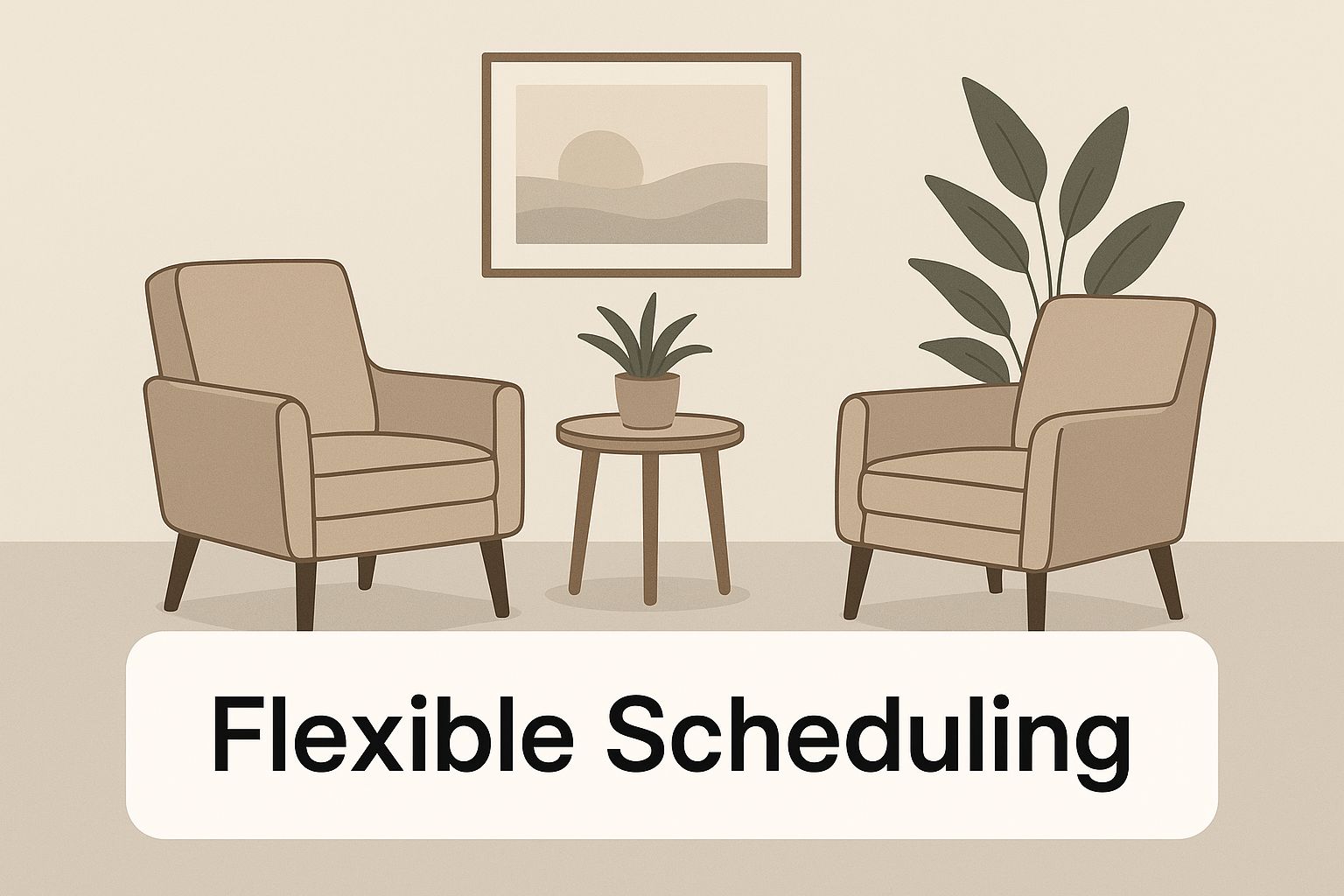
The image really drives home the main benefit of outpatient programs: they are designed to fit into your life, not pull you out of it. Data from the Substance Abuse and Mental Health Services Administration (SAMHSA) backs this up, showing that 82% of all addiction treatment facilities offer some form of outpatient care. You can discover more insights about treatment statistics on AddictionHelp.com.
Each level—OP, IOP, and PHP—offers a distinct path, making sure you can find the perfect balance of support and freedom for your recovery journey.
Call Now – Your Journey to Recovery Begins Today!

Take the first step towards a healthier life! Call now to connect with our compassionate team and start your recovery journey today. Your path to healing awaits!
Our recovery specialists are available 24/7 to provide support, and all calls are confidential and free. Reach out anytime – we’re here to help!
The Building Blocks of a Strong Recovery Program
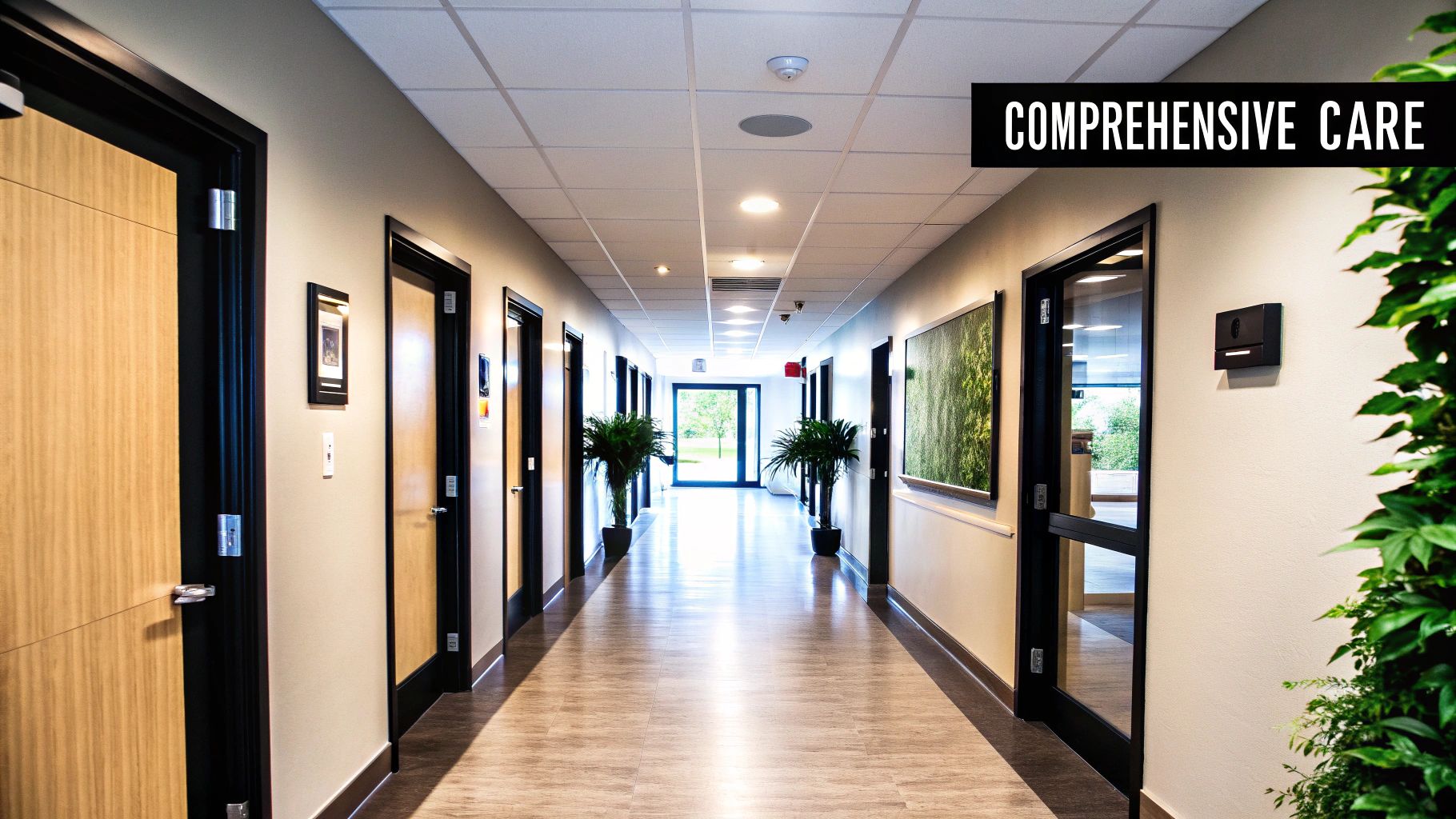
A truly effective outpatient addiction treatment program is so much more than just showing up a few times a week. It’s a carefully designed system of support, with every piece playing a critical role in building a solid foundation for recovery. Think of it like constructing a house—you can’t skip the foundation or use flimsy walls and expect it to stand. You need every component working together.
In recovery, those building blocks are the proven therapies and support systems that treat the whole person, not just the addiction itself. The real goal is to give you the mental tools, emotional strength, and practical skills to navigate life’s challenges without turning back to drugs or alcohol.
Let’s pull back the curtain on the essential components that make these programs successful.
Individual Counseling and Therapy
One-on-one therapy is the absolute cornerstone of any quality program. This is your personal, confidential space to work with a trained professional who is focused entirely on you. It’s where the real work happens—digging into the roots of your addiction, identifying what triggers you, and crafting coping strategies that actually fit your life.
A powerful tool often used here is Cognitive Behavioral Therapy (CBT). It’s a practical approach that helps you connect the dots between your thoughts, feelings, and actions. By learning to recognize and challenge the negative thought patterns that fuel substance use, you start to regain control over how you respond to stress and cravings.
The Power of Group Therapy
While individual counseling is vital for deep personal work, group therapy offers something just as powerful: community. When you sit in a professionally led group, you’re surrounded by peers who don’t just sympathize—they truly get it. That shared experience is an incredible antidote to the profound isolation that addiction thrives on.
Group sessions are multi-purpose powerhouses:
- They dissolve shame. Hearing other people voice the same fears and struggles you have proves you aren’t alone.
- They build new social skills. The group becomes a safe lab for practicing honest communication and forming healthy, supportive bonds.
- They offer fresh perspectives. You learn from everyone’s journey, gaining insights from their wins and their setbacks that you might never see on your own.
This sense of belonging creates a powerful web of accountability and encouragement that can make all the difference.
Medication-Assisted Treatment (MAT)
For many people, especially those recovering from opioid or alcohol use disorders, willpower and therapy alone can’t overcome the intense physical battle of early recovery. This is where Medication-Assisted Treatment (MAT) serves as a critical, science-backed building block. MAT pairs FDA-approved medications with counseling and therapy.
“It’s a common misconception that MAT is just swapping one drug for another. The reality is that it’s a medical intervention designed to stabilize brain chemistry, slash cravings, and block the euphoric effects of substances. This biological stability clears the way for you to fully engage in the crucial psychological work of therapy.”
The growing integration of MAT is one of the biggest advancements in modern addiction care. The number of facilities offering medications like buprenorphine has shot up from 12% to 31%, and today, more than a third of outpatient centers provide some form of MAT. This shows a crucial shift toward treating addiction as the complex medical condition it is.
Family Involvement and Education
Addiction never happens in a vacuum; it sends shockwaves through the entire family. The best outpatient programs understand this and make family therapy and education a core part of their approach. These sessions are designed to mend broken trust, teach healthier communication, and give your loved ones the tools they need to be a positive force in your recovery.
When your family is part of the process, you’re not just getting better—you’re helping to create a healthier, more supportive environment to return to. These building blocks, from personal therapy to family support, all lock into place to create a durable structure for long-term sobriety. For more strategies to strengthen this foundation, check out these helpful tips for staying sober.
Call Now – Your Journey to Recovery Begins Today!

Take the first step towards a healthier life! Call now to connect with our compassionate team and start your recovery journey today. Your path to healing awaits!
Our recovery specialists are available 24/7 to provide support, and all calls are confidential and free. Reach out anytime – we’re here to help!
Choosing Your Path: Outpatient vs. Inpatient Care
Making the call between inpatient and outpatient treatment is one of the biggest decisions you’ll face on the path to recovery. There’s no single “best” answer—it’s all about what’s right for you and your unique situation. The choice can feel overwhelming, but it really just boils down to a few key differences in structure, environment, and intensity.
Think of it like learning to swim. If you’ve never been in the water before, you’d probably want a controlled, shallow pool with a lifeguard watching your every move. That’s a lot like inpatient care—it provides a 24/7, highly structured setting where you can put all your focus on getting well, free from outside triggers.
But what if you already know the basics and just need to build confidence? You might practice in a roped-off area of a calm lake. You’re still in the real world, but you have a safe, defined space to hone your skills. That’s the core idea of an outpatient addiction treatment program: you get intensive, professional support while learning to navigate the challenges of your actual daily life.
The Right Environment for Your Recovery
The most obvious difference is where you live. Inpatient, also known as residential treatment, means you live at the facility for the entire program, which usually lasts 30 to 90 days. This immersive approach is designed to pull you out of an environment full of triggers and stress, creating a safe bubble where you can focus entirely on healing. It’s often the best fit for someone with a severe substance use disorder, co-occurring mental health issues, or an unstable home life.
Outpatient care is the opposite. You live at home and commute to the treatment center for your scheduled therapy sessions. These can range from just a few hours a week to several hours each day. This model works best for people who have a safe, supportive home environment. The biggest challenge—and its greatest strength—is that you get to immediately apply the coping strategies you learn in therapy to real-world situations. You’re building recovery muscle right in the middle of the environment where you’ll need it most.
Comparing Program Intensity and Flexibility
The other major factors are intensity and flexibility. Inpatient programs are, by design, incredibly intense. Your day is scheduled from morning to night with therapy, counseling, and activities, leaving no room for the distractions of the outside world.
Outpatient programs, on the other hand, offer a wide range of intensity levels, which gives you much more control over your own schedule.
- Time Commitment: Inpatient is a full-time commitment. You have to press pause on work, school, and other responsibilities. Outpatient programs are built to fit around your existing life.
- Daily Structure: In an inpatient setting, the facility schedules your entire day. As an outpatient, you manage your own time outside of your appointments.
- Real-World Integration: Outpatient care forces you to practice your recovery skills amid daily triggers, while inpatient care gives you a temporary shield from them.
“The choice really comes down to one question: Do you need to be removed from your current environment to build a strong foundation for recovery, or can you build that foundation right where you are with structured, professional support?”
For a more detailed breakdown, our comprehensive guide on inpatient vs. outpatient rehab can help you figure out which model is the best match for you.
Comparing Outpatient and Inpatient Treatment Models
This side-by-side comparison can help you weigh the critical factors and see which addiction treatment model might best suit your needs.
| Factor | Outpatient Treatment | Inpatient Treatment |
|---|---|---|
| Living Situation | Live at home, travel to the facility for sessions. | Live at the treatment facility 24/7. |
| Flexibility | High. Can maintain work, school, and family duties. | Low. Requires a full-time commitment away from daily life. |
| Environment | Must apply recovery skills in your real-world environment. | Highly structured, controlled, and substance-free environment. |
| Supervision Level | Varies by program, but no 24/7 medical supervision. | Round-the-clock medical and clinical supervision. |
| Ideal Candidate | Motivated individual with a stable home and strong support. | Person with a severe addiction or an unstable living situation. |
| Cost | Generally more affordable due to no housing costs. | More expensive due to room, board, and 24/7 staffing. |
At the end of the day, both paths are designed to get you to the same destination: lasting recovery. The key is to be honest with yourself about your personal needs, the severity of your addiction, and your home environment to choose the path that gives you the best possible chance of success.
Why Outpatient Programs Are More Important Than Ever
The world of addiction treatment is changing, and outpatient programs are moving from the sidelines to center stage. This isn’t just a small shift; it’s a fundamental rethinking of how we approach recovery. We’re seeing a massive swing toward community-based care, recognizing that it’s not just more convenient—it’s often more effective for building a recovery that actually lasts.
What’s behind this? A few powerful forces are at play. Government initiatives are pushing for more accessible, local solutions to combat substance use epidemics. At the same time, there’s a growing realization that recovery works best when it’s integrated into someone’s real life, not separated from it.
The Growing Demand for Accessible Care
The numbers tell the story. The global market for addiction treatment is booming, and outpatient addiction treatment programs are a huge part of that expansion. It’s not just about more buildings; it’s about creating more flexible and realistic paths to getting well.
This shift is a huge validation for anyone considering a more flexible treatment model. It proves that you don’t have to put your entire life on pause to get help. You can build recovery skills while still showing up for your job, your family, and your community—which reinforces the idea that sobriety is something you can achieve right where you are.
The financial data really drives this home. The addiction treatment market was recently valued at around USD 9.44 billion. It’s expected to climb to an estimated USD 16.22 billion by 2034, growing at a rate of 5.56% each year. This isn’t just a number; it represents a massive increase in demand and investment for these vital services. You can see the addiction treatment market projections for yourself on PrecedenceResearch.com.
Aligning Treatment with Real Life
Outpatient programs have become so critical because they fit the way people actually live. Let’s be honest—most people can’t just disappear from their work, school, or family obligations for 30, 60, or 90 days. Outpatient care removes that massive barrier, opening the door to high-quality treatment for countless individuals who might otherwise never get help.
This model also pushes back against the old idea that recovery is a secret to be hidden away. By weaving treatment into daily life, it helps normalize the act of asking for help and chips away at the stigma of addiction. It shows that recovery is an active, ongoing part of life, just like managing any other chronic health issue.
“The rise of outpatient care shows we finally understand that lasting change happens in the real world. The skills you learn in a therapy session get put to the test that same day, creating a powerful learning cycle that builds real confidence and effective coping strategies.”
This focus on real-world practice is everything. It’s one thing to stay sober in a controlled, protected environment, but it’s a whole different challenge to navigate daily triggers and stress. Outpatient care prepares you for exactly that, building resilience where it counts. Our guide offers some powerful relapse prevention tips that can help strengthen that resilience even further.
Ultimately, the growing importance of outpatient services points to a more practical, humane, and effective future for addiction recovery.
How to Find the Right Outpatient Program for You
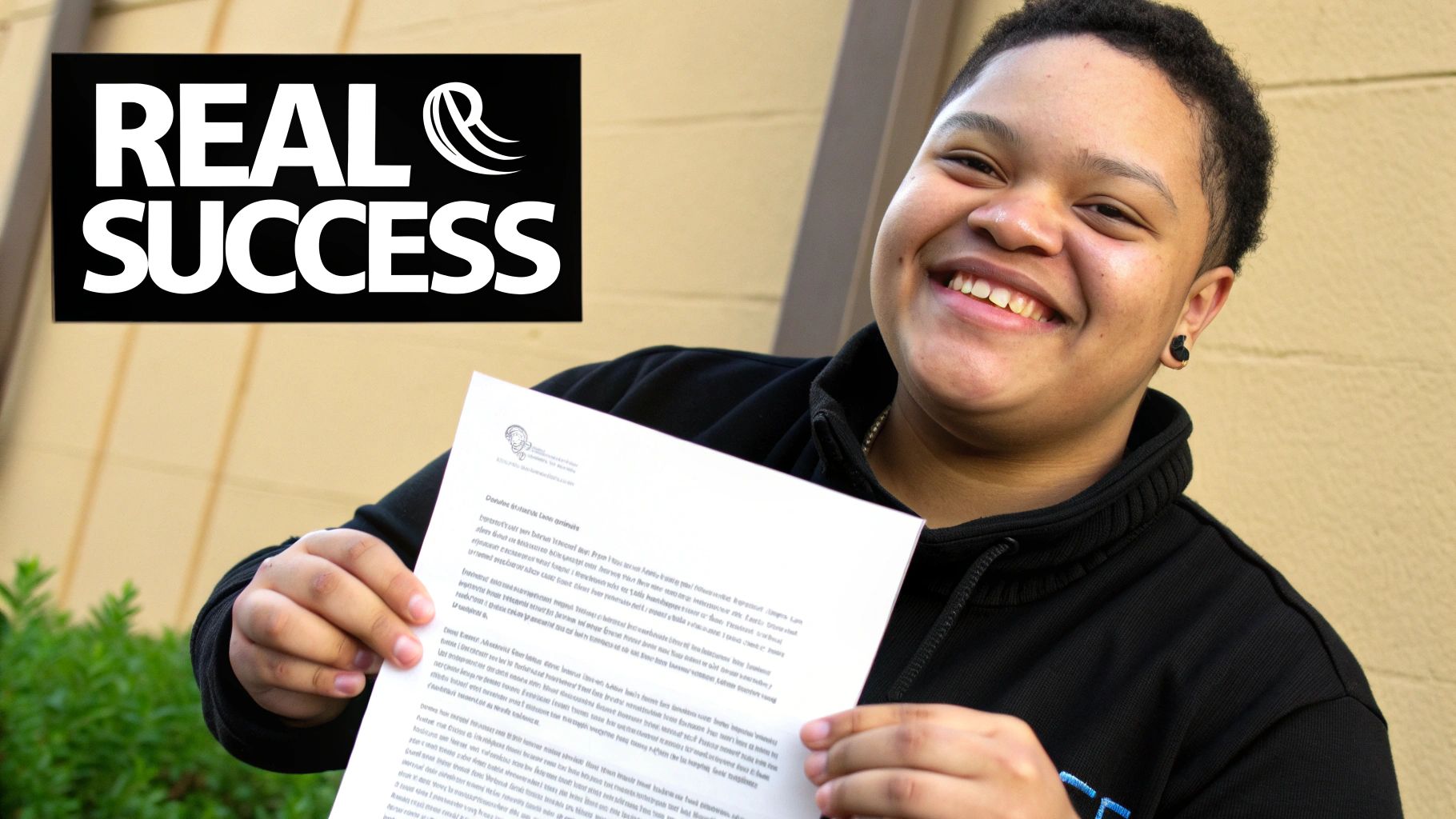
Knowing your options is one thing; turning that knowledge into action is the next crucial step. Finding the right outpatient addiction treatment program isn’t about just picking the first one you find online. It’s about doing a little homework to find a program that truly fits you and your specific recovery goals. Taking the time now sets the stage for a much stronger, more successful recovery down the road.
So, where do you start? A great first move is often talking to a primary care doctor or a therapist you trust. They know your health history and can usually point you toward reputable local programs. Another fantastic resource is the SAMHSA National Helpline. It’s free, completely confidential, and available 24/7 to offer guidance and treatment referrals.
Vetting Potential Treatment Centers
Once you have a shortlist of a few potential centers, it’s time to dig a little deeper. Think of it like you’re interviewing them for a very important job—helping you get your life back. A quality provider will be open, professional, and happy to answer every question you have.
Here are a few non-negotiables to look for:
- Licensing and Accreditation: Is the facility licensed by the state? Even better, is it accredited by a national organization like The Joint Commission or CARF? This is your basic assurance of quality and safety.
- Staff Credentials: Ask about the people who will actually be guiding your treatment. You’ll want to see licensed therapists, certified counselors, and medical staff with real-world experience in addiction medicine.
- Therapeutic Approach: Do they use proven, evidence-based methods? Look for programs that incorporate therapies like Cognitive Behavioral Therapy (CBT) or Dialectical Behavior Therapy (DBT), as these have a solid track record of success.
“A great question to ask upfront is, “What is your core philosophy on recovery?” This tells you a lot about whether their values align with yours. Some centers are strictly abstinence-based, while others might focus more on harm reduction or specialize in treating co-occurring mental health conditions.”
Key Questions to Ask Any Provider
Don’t ever feel shy about asking detailed questions. The more you know, the more power you have to make the right choice for yourself. It’s a good idea to make a list of questions so you can compare each program fairly. If you need more help with these first steps, our guide on how to get into rehab walks through the entire process.
Make sure these questions are on your list:
- What exact services are included? Do you offer individual therapy, group sessions, family counseling, or Medication-Assisted Treatment (MAT)?
- How do you create a personalized treatment plan for each person, and how often is it reviewed?
- What’s the average length of the program, and what kind of aftercare or ongoing support do you offer?
- Do you take my insurance? What can I expect for out-of-pocket costs?
Dealing with insurance and program costs can feel overwhelming, but any good facility will have someone on staff to help you figure out your coverage and payment options. By being thorough now, you can confidently choose an outpatient addiction treatment program that will genuinely support you on your path to a lasting recovery.
Call Now – Your Journey to Recovery Begins Today!

Take the first step towards a healthier life! Call now to connect with our compassionate team and start your recovery journey today. Your path to healing awaits!
Our recovery specialists are available 24/7 to provide support, and all calls are confidential and free. Reach out anytime – we’re here to help!
Common Questions About Outpatient Treatment
Making the choice to get help is a massive step, and it’s completely normal to wonder how treatment will actually work with your day-to-day life. Getting a handle on the real-world logistics of outpatient addiction treatment programs can calm a lot of those nerves and make the road ahead seem less daunting.
Let’s walk through some of the most frequent questions people have when they start exploring this flexible path to recovery.
Can I Keep My Job While Attending an Outpatient Program?
Yes, absolutely. In fact, this is one of the biggest reasons people choose outpatient care. These programs are specifically built around the reality of your life, including your job.
Most centers offer sessions in the morning, evenings, or even on weekends. This flexibility means you can get top-notch clinical support without having to put your career, school, or family life on hold. You get to build a foundation for recovery while keeping the essential parts of your life stable.
What Happens If I Have a Setback During Treatment?
First, it’s critical to know that having a setback or a relapse isn’t a sign of failure. It’s a surprisingly common part of the recovery process for many, and a good treatment program meets it with compassion, not judgment.
If you hit a rough patch, your treatment team will rally around you to:
- Figure out what happened and the circumstances that led to it.
- Pinpoint the specific triggers that you ran into.
- Rework your recovery plan to develop stronger, more effective coping skills.
The entire goal is to turn it into a learning moment. You’ll come away with a deeper understanding and better tools to handle similar situations in the future.
“Recovery is rarely a straight line. A strong outpatient program focuses on progress, not perfection. A setback is simply a clinical event to be analyzed and learned from, just like you would with any other chronic health condition.”
How Long Does an Outpatient Program Typically Last?
There’s no one-size-fits-all answer here. How long an outpatient addiction treatment program lasts is shaped entirely by your personal needs, the specifics of your situation, and the progress you make along the way.
A standard program might run for a few months with you attending one or two sessions a week. On the other hand, an Intensive Outpatient Program (IOP) is more structured and might involve a more focused phase of 30 to 90 days before you step down to a less intensive level of care. Think of your treatment plan as a living document—it’s designed to adapt as you hit your recovery goals and build a solid, sustainable foundation for the future.
Working through these questions is the first step toward finding the right fit for you. Addiction Helpline America is here 24/7 to offer confidential support and help you find treatment options that work with your life. Call us today to speak with a caring specialist through our 24/7 confidential helpline.
Our helpline is 100%
free & confidential
If you or someone you care about is struggling with drug or alcohol addiction, we can help you explore your recovery options. Don’t face this challenge alone—seek support from us.
Programs
Resources
Will my insurance
cover addiction
treatment?
We're ready to help
Find the best
drug or alcohol treatment
center
Are you or a loved one struggling with addiction? Call today to speak to a treatment expert.





